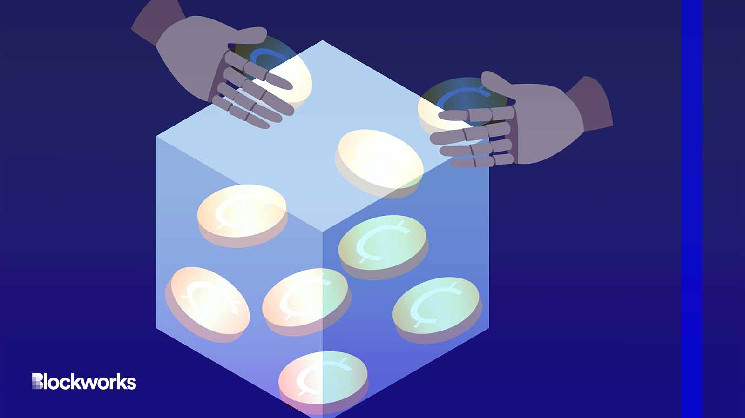Ethereum’s DeFi ecosystem and its many components operate like a collection of blocks, built upon and interlocked with each other. When one block gets knocked out for whatever reason, the whole structure wobbles.
The past week’s Curve-Vyper exploit and subsequent knock-on effects got Myles O’Neil thinking about the role that tokens play in crypto applications.
“I really don’t think it’s healthy,” he says, “when the functionality or utility of your protocol can be impacted by the price of your token.”
On the Bell Curve podcast (Spotify/Apple), the associate at the advisory and investment firm Reverie compares Curve’s relationship to crypto tokens with the investing app Robinhood and its Nasdaq-traded HOOD shares.
“Imagine,” he says, “if there was a market event that impacted HOOD and then all of a sudden, Robinhood…was less secure or services that were relied upon could no longer be relied upon. I don’t think that’s a healthy thing.”
Curve’s role is to be a critical piece of DeFi infrastructure, O’Neil explains. “Many of these DeFi protocols use Curve pools. They rely on Curve emission incentives to offset what would be otherwise pretty unprofitable [liquidity pool] positions.”
Podcast host Mike Ippolito explains that Curve (CRV) token holders are incentivized to lock up their tokens into a “vote escrow model,” directing emissions to stablecoin liquidity pools for rewards. Unlike the price of legacy finance shares in companies like Robinhood, “the price of the token matters a lot to the actual functioning of the product,” he says.
“If your protocol relies on incentives to keep all this scaffolding intact and the incentives are at risk of going to zero at any given point,” O’Neil says, “that’s one more risk that protocols really don’t need to introduce to build a successful product.”
Because Curve founder Michael Egorov’s position and the implications of liquidation “are very well known,” people are going to “hunt that position” for profit, O’Neil says.
“If half of the circulating market cap of CRV is liquidated,” he says, “I’m guessing that drives the price of CRV close to zero and then all of the scaffolding comes apart.”
Token successes
O’Neil mentions the decentralized exchange Uniswap as an example of a protocol that has taken the “opposite route” with tokens. “[Uniswap] doesn’t have the token play any role in the protocol, and instead relies upon this assumption that there’s a sophisticated supply side that will come in and actively manage their liquidity to be profitable.”
Ippolito pushes back on the notion that token incentives don’t work. “The major successes that we’ve had thus far in crypto also are these sort of circular, reflexive mechanisms. Bitcoin is one, Ethereum is one.”
Ippolito continues: “Whenever someone says, ‘We haven’t found the killer use case yet for crypto,’ I mean, haven’t we?”
“Non-sovereign money, an open smart contracting platform that anyone can build anything on. These are not ‘nothing’ use-cases. And Curve reminds me of that a little bit.”
O’Neil replies, “Some of the most successful apps that we’ve had today have no token functionality whatsoever. I just point to OpenSea and Uniswap as two of them.”
“But I will stay open-minded,” O’Neil says, “because if you don’t in this space, then you get left behind.”
 blockworks.co
blockworks.co
